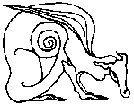
GUILD
33 Haywood Street
Asheville NC
28801
technical help: 828-255-7818
for orders: 1-800-327-8448
fax: 828-255-8593
e-mail us
NATURAL DYEING: very basic instructions
Natural dyes may be animal, vegetable or mineral. These instructions refer to the dyes in our starter set, which are all vegetable dyes. And they refer to the dyeing of wool. Cotton, linen, silk and other fibers can be naturally dyed, but it is harder to do, and not suitable for first attempts Please also see our MORDANTING INSTRUCTIONS for more complete information about this process.
PREPARATION OF WOOL
It is important to remove dirt and grease completely before dyeing. Wash wool at least two times in warm, soapy water. Rinse till the water runs clear. Skeins should not be over-large, and should be tied in several places to prevent tangling. Ties should have tight knots and loose loops.METHODS OF DYEING
There are three basic methods:
We recommend pre-mordanting with alum, and using other color-modifying mordants as additives in the dye-pot. This yields sets of related colors. See MORDANTING RIFF.
AMOUNTS OF DYESTUFF REQUIRED (To dye one pound of wool.)
PREPARATION OF DYE-BATH
Dyestuffs are generally put into cold water and heated slowly. Big pieces should be broken up first. Some benefit from being soaked before heat is applied. Most dyestuffs need to be boiled to extract the color (madder should not be heated beyond a simmer; boiling releases brown dyes). Powders must be fully dissolved. Twigs or bark or other bits and pieces which may get snarled up in the yarn should be strained out before yarn is added. Heat till color is released into the bath, then allow to cool slightly.Dye-pots must be non-reactive (enamel is good) if you want a clear color; iron or other metal pots will act as mordants and affect your results. And they must be large enough for the amount of wool to be dyed to spread out and move around freely, to avoid uneven dyeing. Four gallons of water to one pound of fiber is about right.
DYEING
Enter wet wool into a tepid bath. Heat slowly. Avoid abrupt temperatures changes throughout, to minimize shrinking. Rough stirring causes felting; be gentle. Dye until desired shade is reached, or bath is exhausted, remembering that colors are darker on wet wool than on dry. Let the bath cool, then lift wool out, carefully. Squeeze gently to remove excess dye. Rinse till there is no run-off, and allow to dry.
| NO |
ALUM |
BLUE |
COPPERAS |
TIN |
|
ALKANET |
gray/blue |
purple |
brown/purple |
purple/black |
deep mauve |
BRAZIL WOOD |
pink
to |
salmon
to |
brown/salmon |
rosy
brown/ |
pink rose |
CUTCH |
rusty tan |
rusty brown |
brown |
gray brown |
rusty gold |
HENNA |
brown |
brown |
khaki/brown |
dark brown |
red brown |
LOGWOOD |
blue
to |
gray/brown |
gray/blue |
purple/grey |
dark purple |
MADDER |
pink tan |
deep orange |
dark tan |
brown |
orange |
OSAGE |
light yellow |
green/yellow |
light olive |
olive |
bright yellow |
INDIGO |
blues |
no mordant required, it's a different process |
|||
COCHINEAL |
pink |
crimson |
dusty purple |
gray/purple- |
red |